-
 Bitcoin
Bitcoin $108,489.6704
1.13% -
 Ethereum
Ethereum $2,502.0528
2.92% -
 Tether USDt
Tether USDt $1.0002
0.00% -
 XRP
XRP $2.1941
0.51% -
 BNB
BNB $655.3375
1.00% -
 Solana
Solana $151.5977
1.27% -
 USDC
USDC $0.9999
0.00% -
 TRON
TRON $0.2768
0.32% -
 Dogecoin
Dogecoin $0.1676
2.86% -
 Cardano
Cardano $0.5675
0.98% -
 Hyperliquid
Hyperliquid $40.6109
7.48% -
 Bitcoin Cash
Bitcoin Cash $500.7746
2.09% -
 Sui
Sui $2.8328
2.03% -
 Chainlink
Chainlink $13.4452
1.26% -
 UNUS SED LEO
UNUS SED LEO $9.1623
0.39% -
 Avalanche
Avalanche $18.2267
2.24% -
 Stellar
Stellar $0.2382
0.00% -
 Toncoin
Toncoin $2.8885
1.68% -
 Shiba Inu
Shiba Inu $0.0...01159
0.91% -
 Litecoin
Litecoin $87.1827
0.88% -
 Hedera
Hedera $0.1511
2.90% -
 Monero
Monero $315.4992
-0.59% -
 Polkadot
Polkadot $3.4663
2.34% -
 Bitget Token
Bitget Token $4.6118
-0.65% -
 Dai
Dai $1.0000
-0.01% -
 Ethena USDe
Ethena USDe $1.0003
0.02% -
 Uniswap
Uniswap $7.2989
4.69% -
 Pepe
Pepe $0.0...01003
5.73% -
 Aave
Aave $275.5616
7.15% -
 Pi
Pi $0.5181
-2.49%
What are the characteristics of decentralized applications? What is the difference between the user experience of DApp and traditional App?
DApps, built on blockchain, offer transparency and security but may have slower performance and require crypto wallets, differing from traditional apps.
May 06, 2025 at 11:35 pm

Decentralized applications, commonly known as DApps, have emerged as a significant innovation within the cryptocurrency ecosystem. These applications operate on blockchain technology, offering a range of unique features that distinguish them from traditional applications. In this article, we will explore the key characteristics of DApps and delve into how their user experience differs from that of traditional apps.
Characteristics of Decentralized Applications
DApps are built on blockchain technology, which serves as their underlying infrastructure. This means that instead of relying on a central server, DApps operate on a distributed network of nodes. This decentralized nature ensures that no single entity has control over the application, enhancing security and reducing the risk of data breaches.
Transparency and immutability are core features of DApps. Since all transactions and operations are recorded on the blockchain, they are publicly verifiable and cannot be altered once written. This level of transparency fosters trust among users, as they can independently verify the integrity of the application.
Smart contracts are another fundamental characteristic of DApps. These are self-executing contracts with the terms directly written into code. They automatically enforce the rules and execute the agreed-upon actions when predefined conditions are met. Smart contracts eliminate the need for intermediaries, reducing costs and increasing efficiency.
Open-source nature of DApps is a significant advantage. Most DApps are open-source, meaning their code is publicly available for anyone to inspect, modify, and contribute to. This not only fosters a community-driven development process but also enhances security through peer review.
Token-based incentives often drive the ecosystem of DApps. Many DApps have their own native tokens, which are used to reward users for contributing to the network, such as providing computational resources or participating in governance. These tokens can also be used within the DApp for various purposes, such as paying for services or accessing premium features.
User Experience of DApps vs. Traditional Apps
The user experience of DApps differs significantly from that of traditional apps due to their decentralized nature and the technologies they employ. Here, we will examine these differences in detail.
Access and Interface: Traditional apps are typically accessed through app stores and run on centralized servers. In contrast, DApps are accessed through web browsers or specialized wallets that connect to the blockchain. This means users need to have a compatible wallet installed and configured to interact with a DApp. The interface of DApps can sometimes be less polished than traditional apps, as they are often developed by smaller teams or communities.
Speed and Performance: Traditional apps generally offer faster performance, as they rely on centralized servers that can be optimized for speed. DApps, however, may experience slower transaction times due to the need for consensus on the blockchain. This can lead to a less responsive user experience, especially during periods of high network congestion.
Security and Privacy: Traditional apps often collect and store user data on centralized servers, which can be vulnerable to hacks and data breaches. DApps, on the other hand, offer enhanced security and privacy because user data is stored on the blockchain, which is inherently more secure. However, this also means that users are responsible for managing their private keys, which can be a source of confusion and potential risk.
Cost and Accessibility: Traditional apps are often free to use, with monetization coming from advertising or in-app purchases. DApps may require users to pay transaction fees in the form of cryptocurrency, which can be a barrier to entry for some users. Additionally, the need for a cryptocurrency wallet and understanding of blockchain technology can make DApps less accessible to the general public.
Interoperability and Ecosystem: Traditional apps often operate in silos, with limited interoperability between different platforms. DApps, however, can leverage the interconnected nature of blockchains to interact with other DApps and services. This can create a more seamless and integrated user experience within the broader ecosystem of decentralized applications.
Technical Aspects of Using DApps
To use a DApp, users must follow a series of steps that differ from those required for traditional apps. Here's a detailed guide on how to get started with a DApp:
- Install a Compatible Wallet: Choose a wallet that supports the blockchain on which the DApp is built. Popular options include MetaMask for Ethereum-based DApps and Trust Wallet for a variety of blockchains.
- Fund Your Wallet: Purchase or transfer the required cryptocurrency to your wallet. This will be used to pay for transaction fees and interact with the DApp.
- Connect to the DApp: Navigate to the DApp's website and connect your wallet. This usually involves clicking a "Connect Wallet" button and following the prompts to authorize the connection.
- Interact with the DApp: Once connected, you can use the DApp's features. This may involve sending transactions, participating in governance, or using the DApp's services.
Challenges and Considerations
While DApps offer numerous advantages, they also come with their own set of challenges and considerations. Understanding these can help users navigate the decentralized landscape more effectively.
Learning Curve: The technical nature of DApps means there is often a steep learning curve for new users. Understanding concepts like private keys, gas fees, and smart contracts can be daunting for those unfamiliar with blockchain technology.
Scalability Issues: Many blockchains struggle with scalability, leading to slow transaction times and high fees during peak usage periods. This can impact the usability of DApps built on these networks.
Regulatory Uncertainty: The regulatory environment for DApps is still evolving. Users must be aware of the legal implications of using DApps, especially in areas like financial services and data privacy.
Security Risks: While DApps offer enhanced security through decentralization, they are not immune to risks. Users must take precautions to secure their private keys and be aware of potential vulnerabilities in smart contracts.
Real-World Examples of DApps
To better understand the practical applications of DApps, let's look at a few real-world examples:
Uniswap: Uniswap is a decentralized exchange (DEX) built on the Ethereum blockchain. It allows users to swap tokens directly from their wallets without the need for a centralized intermediary. Uniswap's interface is user-friendly, and it leverages smart contracts to facilitate trades automatically.
Decentraland: Decentraland is a virtual reality platform where users can buy, sell, and build on parcels of land within a virtual world. The platform uses the MANA token for transactions and governance, and it is built on the Ethereum blockchain.
Compound: Compound is a decentralized lending protocol that allows users to lend and borrow cryptocurrency. Users can earn interest on their deposits or borrow against their collateral, all managed through smart contracts on the Ethereum blockchain.
Frequently Asked Questions
Q: Can DApps be used on mobile devices?
A: Yes, many DApps are accessible on mobile devices through web browsers or specialized mobile wallets. However, the user experience may vary, and some DApps may have dedicated mobile applications.
Q: Are DApps completely anonymous?
A: While DApps can offer a higher degree of privacy than traditional apps, they are not completely anonymous. Transactions on public blockchains are transparent, and users must take additional steps, such as using privacy-focused cryptocurrencies or mixing services, to enhance their anonymity.
Q: How can I ensure the security of my DApp interactions?
A: To ensure the security of your DApp interactions, always use reputable wallets, keep your private keys secure, and be cautious of phishing attempts. Additionally, research the DApp thoroughly and be aware of any known vulnerabilities in its smart contracts.
Q: What happens if a DApp stops working or goes offline?
A: Since DApps are decentralized, they are less likely to go offline completely. However, if a DApp stops functioning, it could be due to issues with the underlying blockchain or smart contract bugs. In such cases, the community or developers behind the DApp would need to address the issue, and users should stay informed through official channels.
Disclaimer:info@kdj.com
The information provided is not trading advice. kdj.com does not assume any responsibility for any investments made based on the information provided in this article. Cryptocurrencies are highly volatile and it is highly recommended that you invest with caution after thorough research!
If you believe that the content used on this website infringes your copyright, please contact us immediately (info@kdj.com) and we will delete it promptly.
- Ripple, Stablecoin, Adoption: RLUSD Leading the Charge
- 2025-06-30 14:30:12
- Bitcoin ETF, IBIT, and the Bull Flag: Is $144,000 on the Horizon?
- 2025-06-30 14:50:12
- Bitcoin, Passive Income, and a Bull Raise: Riding the Crypto Wave
- 2025-06-30 14:30:12
- Bitcoin, Personal Loans, and Omega 88: A New Era in Lending?
- 2025-06-30 15:09:14
- Saylor's Strategy: How MicroStrategy's Bitcoin Bet is Reshaping Finance
- 2025-06-30 14:52:14
- Metaplanet's Bitcoin Blitz: From Zero to Hero in the Corporate Treasury Race
- 2025-06-30 15:10:54
Related knowledge
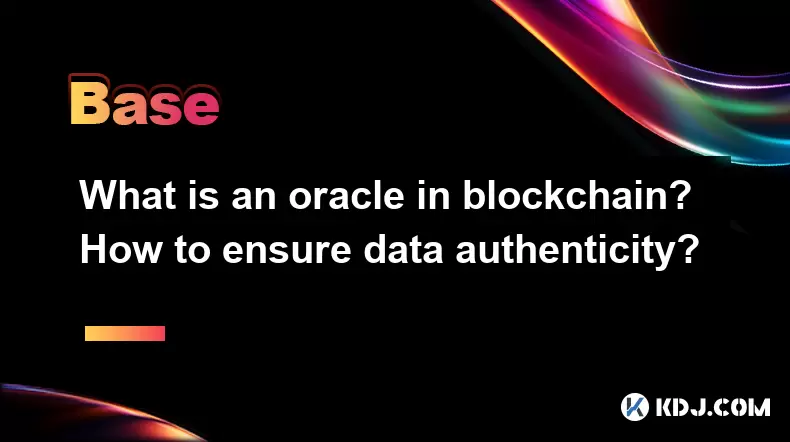
What is an oracle in blockchain? How to ensure data authenticity?
Jun 19,2025 at 08:49pm
Understanding the Role of an Oracle in BlockchainIn the context of blockchain technology, an oracle serves as a bridge between the blockchain and external data sources. While blockchains are inherently secure and decentralized, they cannot access real-world information on their own. Oracles enable smart contracts to interact with off-chain data such as ...
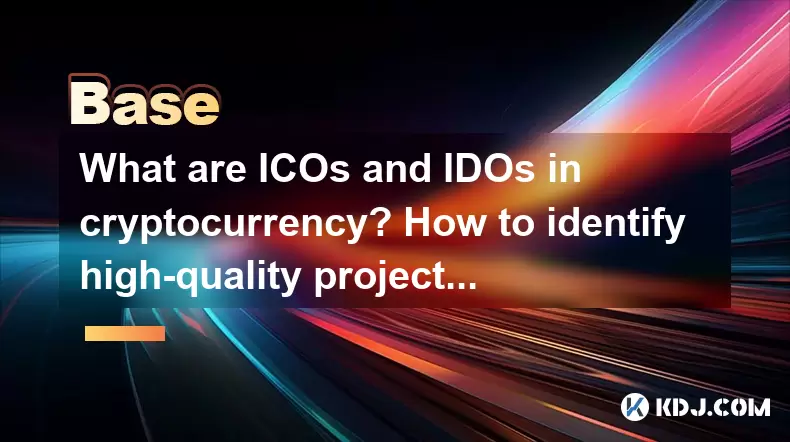
What are ICOs and IDOs in cryptocurrency? How to identify high-quality projects?
Jun 22,2025 at 11:49am
Understanding ICOs in CryptocurrencyInitial Coin Offerings (ICOs) are fundraising mechanisms used by cryptocurrency startups to raise capital for their projects. In an ICO, a company creates and sells its own tokens to investors in exchange for established cryptocurrencies like Bitcoin or Ethereum. The process typically involves the release of a whitepa...
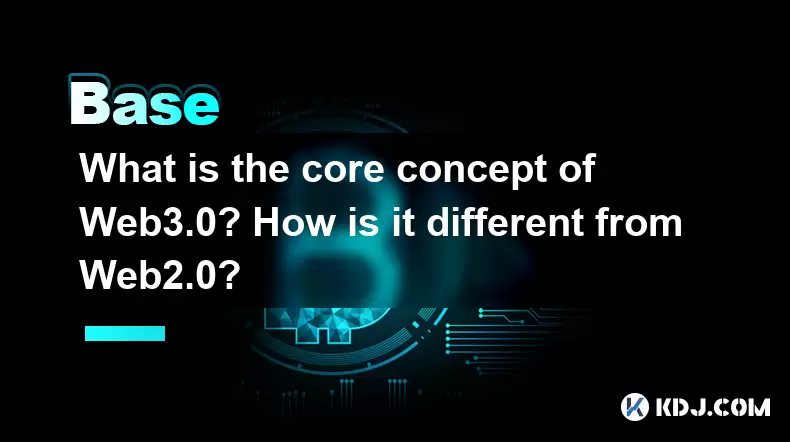
What is the core concept of Web3.0? How is it different from Web2.0?
Jun 21,2025 at 05:56pm
Decentralization as the Foundation of Web3.0The core concept of Web3.0 revolves around decentralization, which fundamentally challenges the centralized architecture of Web2.0. In Web3.0, control and ownership are distributed across a network rather than being held by a central authority or corporation. This is achieved primarily through blockchain techn...
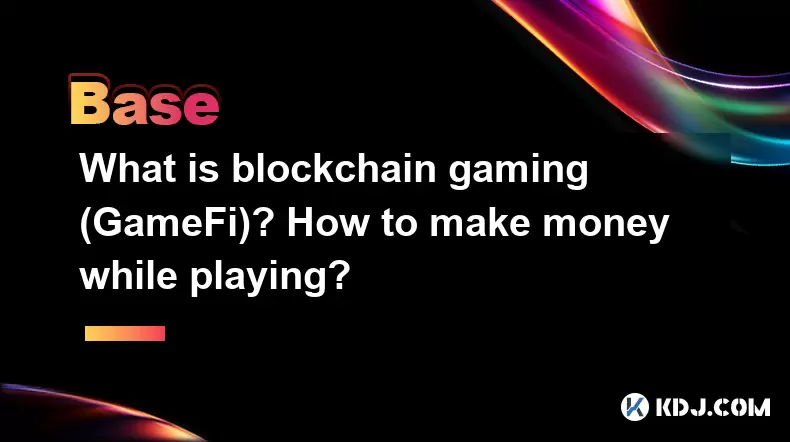
What is blockchain gaming (GameFi)? How to make money while playing?
Jun 20,2025 at 07:56am
Understanding Blockchain Gaming (GameFi)Blockchain gaming, often referred to as GameFi, is a fusion of blockchain technology and video games. It enables players to own in-game assets through non-fungible tokens (NFTs) and earn rewards via cryptocurrencies or token-based systems. Unlike traditional games where items are controlled by centralized develope...
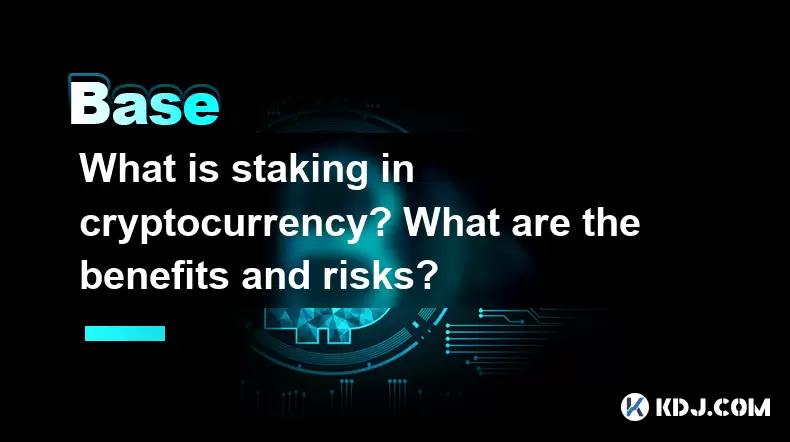
What is staking in cryptocurrency? What are the benefits and risks?
Jun 22,2025 at 10:01am
Understanding the Concept of Staking in CryptocurrencyStaking in cryptocurrency refers to the process of actively participating in transaction validation on a blockchain network that uses a Proof-of-Stake (PoS) consensus mechanism. Instead of miners competing to solve complex mathematical puzzles as in Proof-of-Work systems like Bitcoin, PoS blockchains...
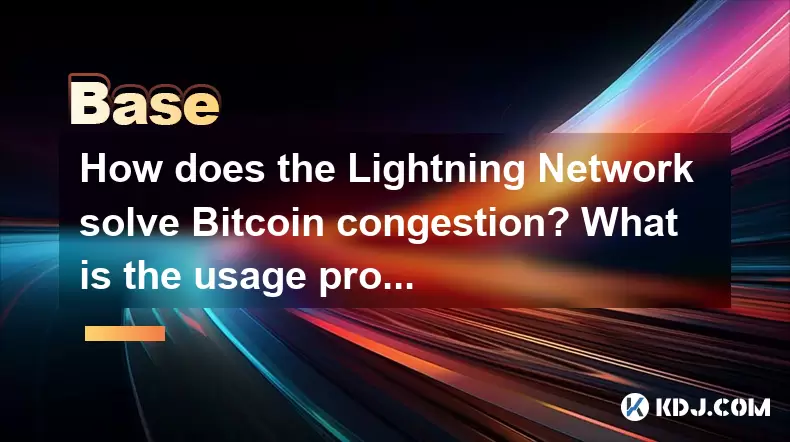
How does the Lightning Network solve Bitcoin congestion? What is the usage process?
Jun 23,2025 at 06:21pm
Understanding Bitcoin Network CongestionBitcoin, as a decentralized digital currency, operates on a blockchain that records every transaction in a public ledger. Each block has a limited size, typically 1 megabyte, which allows for only a certain number of transactions per second (TPS). When the number of transactions increases, the network becomes cong...

What is an oracle in blockchain? How to ensure data authenticity?
Jun 19,2025 at 08:49pm
Understanding the Role of an Oracle in BlockchainIn the context of blockchain technology, an oracle serves as a bridge between the blockchain and external data sources. While blockchains are inherently secure and decentralized, they cannot access real-world information on their own. Oracles enable smart contracts to interact with off-chain data such as ...

What are ICOs and IDOs in cryptocurrency? How to identify high-quality projects?
Jun 22,2025 at 11:49am
Understanding ICOs in CryptocurrencyInitial Coin Offerings (ICOs) are fundraising mechanisms used by cryptocurrency startups to raise capital for their projects. In an ICO, a company creates and sells its own tokens to investors in exchange for established cryptocurrencies like Bitcoin or Ethereum. The process typically involves the release of a whitepa...

What is the core concept of Web3.0? How is it different from Web2.0?
Jun 21,2025 at 05:56pm
Decentralization as the Foundation of Web3.0The core concept of Web3.0 revolves around decentralization, which fundamentally challenges the centralized architecture of Web2.0. In Web3.0, control and ownership are distributed across a network rather than being held by a central authority or corporation. This is achieved primarily through blockchain techn...

What is blockchain gaming (GameFi)? How to make money while playing?
Jun 20,2025 at 07:56am
Understanding Blockchain Gaming (GameFi)Blockchain gaming, often referred to as GameFi, is a fusion of blockchain technology and video games. It enables players to own in-game assets through non-fungible tokens (NFTs) and earn rewards via cryptocurrencies or token-based systems. Unlike traditional games where items are controlled by centralized develope...

What is staking in cryptocurrency? What are the benefits and risks?
Jun 22,2025 at 10:01am
Understanding the Concept of Staking in CryptocurrencyStaking in cryptocurrency refers to the process of actively participating in transaction validation on a blockchain network that uses a Proof-of-Stake (PoS) consensus mechanism. Instead of miners competing to solve complex mathematical puzzles as in Proof-of-Work systems like Bitcoin, PoS blockchains...

How does the Lightning Network solve Bitcoin congestion? What is the usage process?
Jun 23,2025 at 06:21pm
Understanding Bitcoin Network CongestionBitcoin, as a decentralized digital currency, operates on a blockchain that records every transaction in a public ledger. Each block has a limited size, typically 1 megabyte, which allows for only a certain number of transactions per second (TPS). When the number of transactions increases, the network becomes cong...
See all articles

























































































